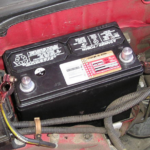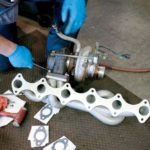Car battery replacement is an essential maintenance task that all vehicle owners must undertake at some point. It is important to understand the signs that indicate your battery is failing, as well as how to replace it safely and effectively.
Signs of a Failing Battery
The following are some of the signs that your car battery is failing:
Dimming Lights
If you notice that your headlights or interior lights are dimming, it could be a sign that your battery is losing its charge. This is especially noticeable when you turn on your car, as the lights will dim significantly.
Difficulty Starting
If your car is slow to start or requires multiple attempts to turn over, it could be a sign that your battery is failing. This is because your starter motor requires a significant burst of energy to turn the engine over, and a weak battery may not have enough power to provide this.
Battery Age
Car batteries typically last between three and five years, depending on usage and maintenance. If your battery is approaching this age, it may be time to consider replacing it, even if it is not yet showing any signs of failure.
Corrosion
If you notice any corrosion on your battery terminals or cables, it may be a sign that your battery is leaking acid or gases. This can cause electrical problems and may indicate that your battery is failing.
How to Replace a Car Battery
Replacing a car battery is a relatively simple process that can be done in just a few steps. Here's how:
Step 1: Gather Your Tools
To replace your car battery, you will need the following tools:
- Wrench or pliers
- Battery terminal cleaner
- Wire brush or sandpaper
- Replacement battery
Step 2: Disconnect the Battery
Before you start, make sure your car is turned off and the keys are removed from the ignition. Locate your battery and use a wrench or pliers to remove the negative (black) cable from the battery terminal. Then, remove the positive (red) cable in the same way.
Step 3: Remove the Old Battery
Use a wrench or pliers to remove any brackets or clamps holding the battery in place. Then, lift the battery out of the car and set it aside.
Step 4: Clean the Terminals
Use a battery terminal cleaner and wire brush or sandpaper to clean any corrosion from the battery terminals and cables. This will ensure a good connection with the new battery.
Step 5: Install the New Battery
Carefully place the new battery in the same position as the old one, making sure it is held securely in place by any brackets or clamps. Then, connect the positive cable to the positive terminal on the battery, followed by the negative cable to the negative terminal.
Step 6: Test the Battery
Turn on your car and check that all electrical systems are functioning correctly. If everything is working as it should, you have successfully replaced your car battery.
Conclusion
Car battery replacement is an important task that all vehicle owners should be able to perform. By understanding the signs of a failing battery and following the simple steps outlined above, you can replace your battery safely and effectively, ensuring that your car is always running smoothly and reliably.








